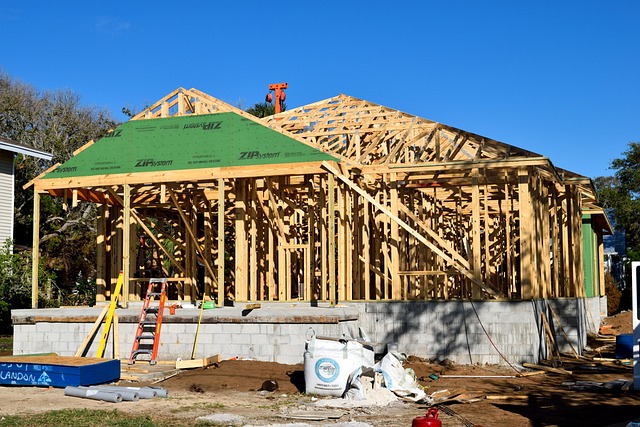The world has evolved, so it has impacted many cultures and styles, and the most contemporary part is mindsets. Every culture reflects its mindsets, so the world of architecture and design has constructed new trends that are not just fashionable; this is a seamless reflection of how people live, think, and embrace. When it comes to luxury home construction in Canberra, these patterns of versatility are telling. It shows high-end homeowners are shifting surface-level glamour to meaningful, long-lasting design.
What Are Luxury Home Construction Trends?
A luxury home construction trend reflects how design, materials, and lifestyle needs evolve over time. In the past, trends followed aesthetics: bold wallpaper, exposed brick, and open-plan kitchens. Today, construction trends run deeper. They include sustainable building practices, technology integration, and environmental harmony. These shifts speak volumes about how homeowners think about longevity, comfort, efficiency, and identity.
Over the last two decades, Canberra’s homes have moved from traditional pitched-roof bungalows to thermally broken, energy-efficient homes built around solar orientation and cross-ventilation. It’s no longer about bigger houses—it’s about better ones.
Why Trends Matter in Luxury Home Construction
Trends aren’t about following the crowd; they’re about staying ahead of the curve. When a homeowner invests in a luxury build, they expect longevity, relevance, and comfort. Building with outdated principles doesn’t just cost more in the long run—it risks a disconnect between the home and the people who live in it.
In a city like Canberra, where seasons shift dramatically and where people are increasingly aware of their environmental footprint, luxury homes need to be more than just visually striking. They need to perform well, support health and well-being, and remain functional for decades.
Let’s look at the seven defining luxury home construction trends shaping Canberra in 2025.

Nature-Driven Architecture
What It Is: Homes are being built with materials and layouts that echo their surroundings. Think native timber, stonework, and designs that open to garden courtyards and natural light.
Perks: Visually calming, reduces the need for artificial lighting and heating.
Pros:
- Enhances connection to the landscape
- Supports mental well-being
- Improves resale value
Cons:
- Requires skilled design to balance sun and shade
- Some materials may age faster without maintenance
Passive and Thermal Performance Design
What It Is: Using thermal mass, insulation, double glazing, and orientation to reduce reliance on mechanical heating and cooling.
Perks: Smaller energy bills and more consistent comfort.
Pros:
- Reduces carbon footprint
- Ideal for Canberra’s sharp winters
- Often qualifies for rebates and incentives
Cons:
- Higher initial investment
- Not effective without precise design coordination
Smart Homes, Built In Not Bolted On
What It Is: Automation isn’t an afterthought anymore. From lighting to irrigation to blinds, homes are wired for intelligent control from the start.
Perks: Simplifies life, boosts energy efficiency, and increases property value.
Pros:
- Central control of multiple systems
- Remote access via smartphones
- Adds prestige to the property
Cons:
- Requires updates as tech evolves
- It can create privacy concerns if poorly secured
Dedicated Wellness Zones
What It Is: Rooms and spaces designed around relaxation and health. Think salt therapy walls, meditation nooks, spa bathrooms, and home saunas.
Perks: Encourages slower living and supports daily mental reset.
Pros:
- Increases enjoyment of the home
- Highly attractive to future buyers
- Supports mental and physical well-being
Cons:
- Adds to build complexity and cost
- Not every layout suits these spaces
Minimalist Façades With Hidden Depth
What It Is: Sleek exteriors that conceal layered internal layouts, storage, or multi-use spaces.
Perks: Elegant curb appeal with thoughtful interiors.
Pros:
- Looks timeless
- The focus remains on internal liveability
- Emphasizes proportion oversize
Cons:
- Requires careful detailing to avoid looking bland
Flexible Spaces for Hybrid Living
What It Is: Floorplans that shift with life—offices that double as guest rooms, kids’ play zones that become teenage retreats, etc.
Perks: Makes the home more liveable across decades.
Pros:
- Supports multi-generational households
- Responds to working-from-home trends
- Reduces the need for renovations later
Cons:
- Needs forward-thinking during design
- Can sacrifice specialized room functions
Conclusion
The future of luxury home construction in Canberra connects and lives in homes that are responsive and rooted in their environment. Such trends reflect a mindset shift to build in a way that supports better living.
As leading home builders in Canberra begin to integrate these ideas, the result is a new kind of prestige home. Whether you’re planning a new build or refining a design, staying in tune with the direction of modern luxury ensures you’re building something that won’t just look good in 2025 but still feel relevant in 2045.


YOUR COMMENT